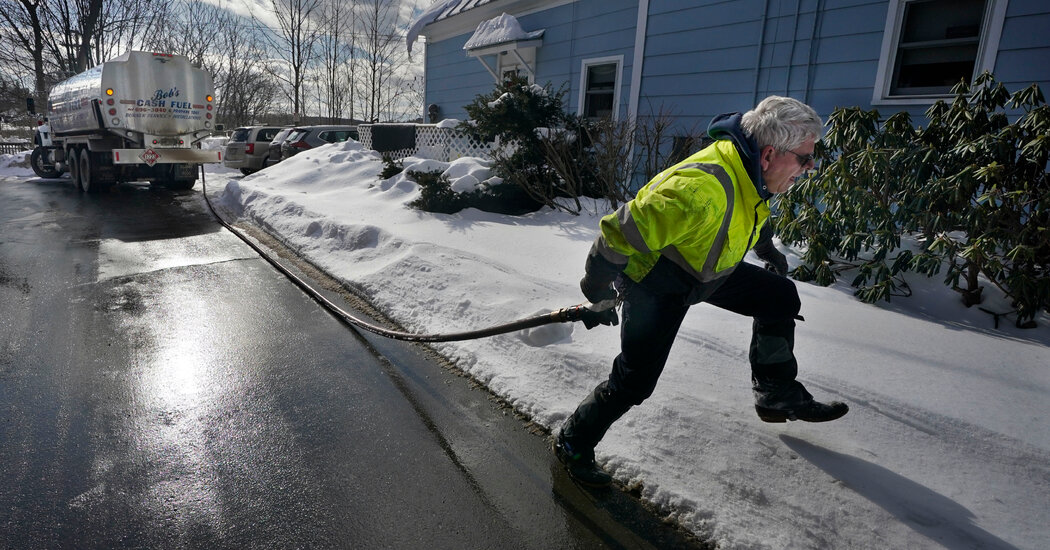The Trump administration has abruptly laid off the entire staff running a $4.1 billion program to help low-income households across the United States pay their heating and cooling bills.
The firings threaten to paralyze the Low Income Home Energy Assistance Program, which was created by Congress in 1981 and helps to offset high utility bills for roughly 6.2 million people from Maine to Texas during frigid winters and hot summers.
“They fired everybody, there’s nobody left to do anything,” said Mark Wolfe, executive director of the National Energy Assistance Directors Association, which works with states to secure funding from the program. “Either this was incredibly sloppy, or they intend to kill the program altogether.”
The layoffs were part of a broader purge on Monday of approximately 10,000 employees from the Department of Health and Human Services on Monday, as Health Secretary Robert F. Kennedy Jr. moved to drastically reorganize the agency. Roughly 25 employees had been overseeing the energy assistance program, which is also known as LIHEAP. All had been laid off, Mr. Wolfe said.
Congress had approved $4.1 billion for the program for fiscal year 2025, and about 90 percent of that money had already been sent to states in October to help households struggling with high heating costs. There is still about $378 million left to assist with summer cooling as households crank up their air-conditioners. Heat waves in the United States are growing more intense and lasting longer as a result of climate change.
Normally, the federal government sends the money to state agencies after allocating the funds using a complicated formula and performing various reviews and audits. Some states, like Maine, use the money to help low-income families to offset the cost of buying fuel oil to heat their homes in the winter. States also use the money to weatherize homes and provide emergency assistance to households at risk of being disconnected from their utility.
Now, it’s not clear how the remaining funds could be disbursed to the states, even though Congress has explicitly ordered the federal government to spend the money.
“If there’s no staff, how do you allocate the rest of this money?” Mr. Wolfe said. “My fear is that they’ll say we’ve got this funding, but there’s nobody left to administer it, so we can’t send it out.”
In an emailed statement, Emily Hilliard, a spokeswoman for the Department of Health and Human Services, said the agency “will continue to comply” with federal law “and as a result of the reorganization, will be better positioned to execute on Congress’s statutory intent.”
Over the past two months, the Trump administration has repeatedly tried to freeze or withhold spending authorized by Congress. Those moves have triggered a growing number of legal challenges and judicial rulings that say doing so is unconstitutional.
The firings at the energy assistance office triggered a furious response from several Democratic lawmakers.
“What ‘efficiency’ is achieved by firing everyone in Maine whose job is to help Mainers afford heating oil when it’s cold?,” Representative Jared Golden, a Democrat who represents a largely rural district in Maine that voted for President Trump, wrote in a social media post.
Senator Edward Markey, Democrat of Massachusetts, said he would work to try to unlock the program’s funding. “Eliminating the entire federal staff responsible for LIHEAP — a program that millions of households depend on to stay warm in the winter and cool in the summer — isn’t reform,” he said in a statement. “It’s sabotage.”
The office of Senator Susan Collins, Republican of Maine, issued a statement saying: “Senator Collins has been a longtime advocate for LIHEAP and the critical financial assistance it provides to lower income families to help ensure that they can stay warm during the winter months. It is unclear how, and if, the administration of this program will be affected by the HHS staffing changes.”
A study published in The Economic Journal last year found that roughly 17 percent of U.S. households spend more than one-tenth of their income on energy, a threshold that researchers often define as a “severe” energy burden. The study also found a strong relationship between energy affordability and winter mortality.
“When home heating is less affordable, more people die each winter,” Seema Jayachandran, an economist at Princeton and one of the authors of the study, wrote on Monday. “That’s what our analysis found for a period when LIHEAP was in place. Without LIHEAP, the effect would presumably much larger.”
